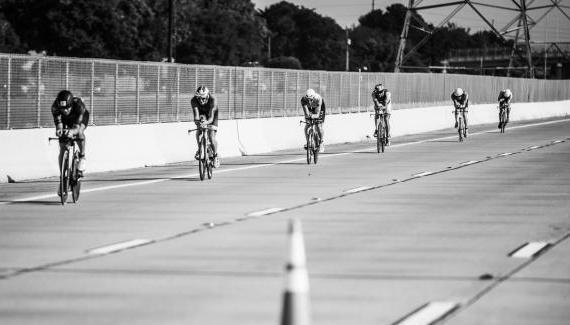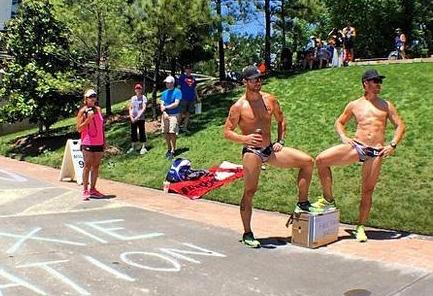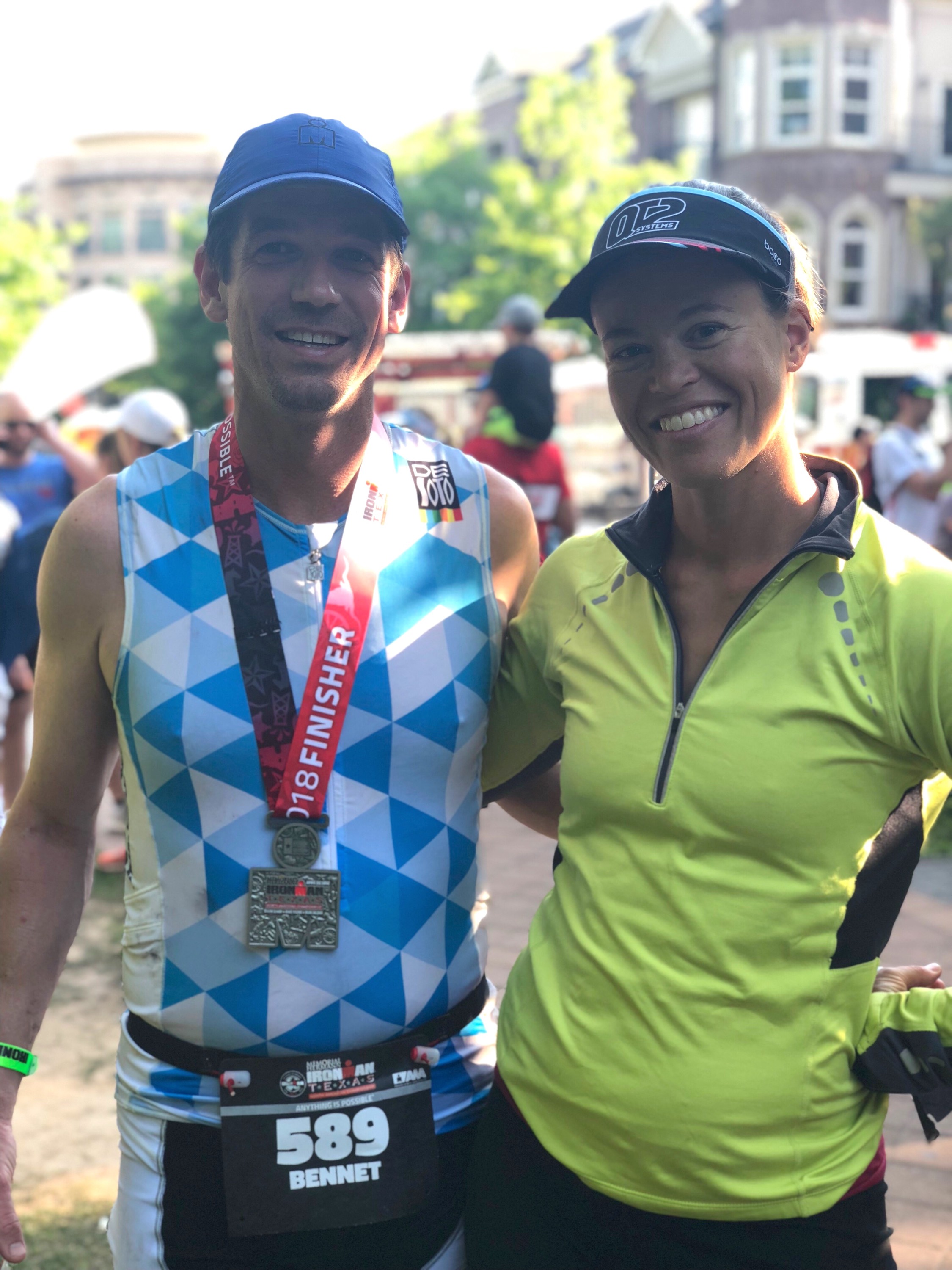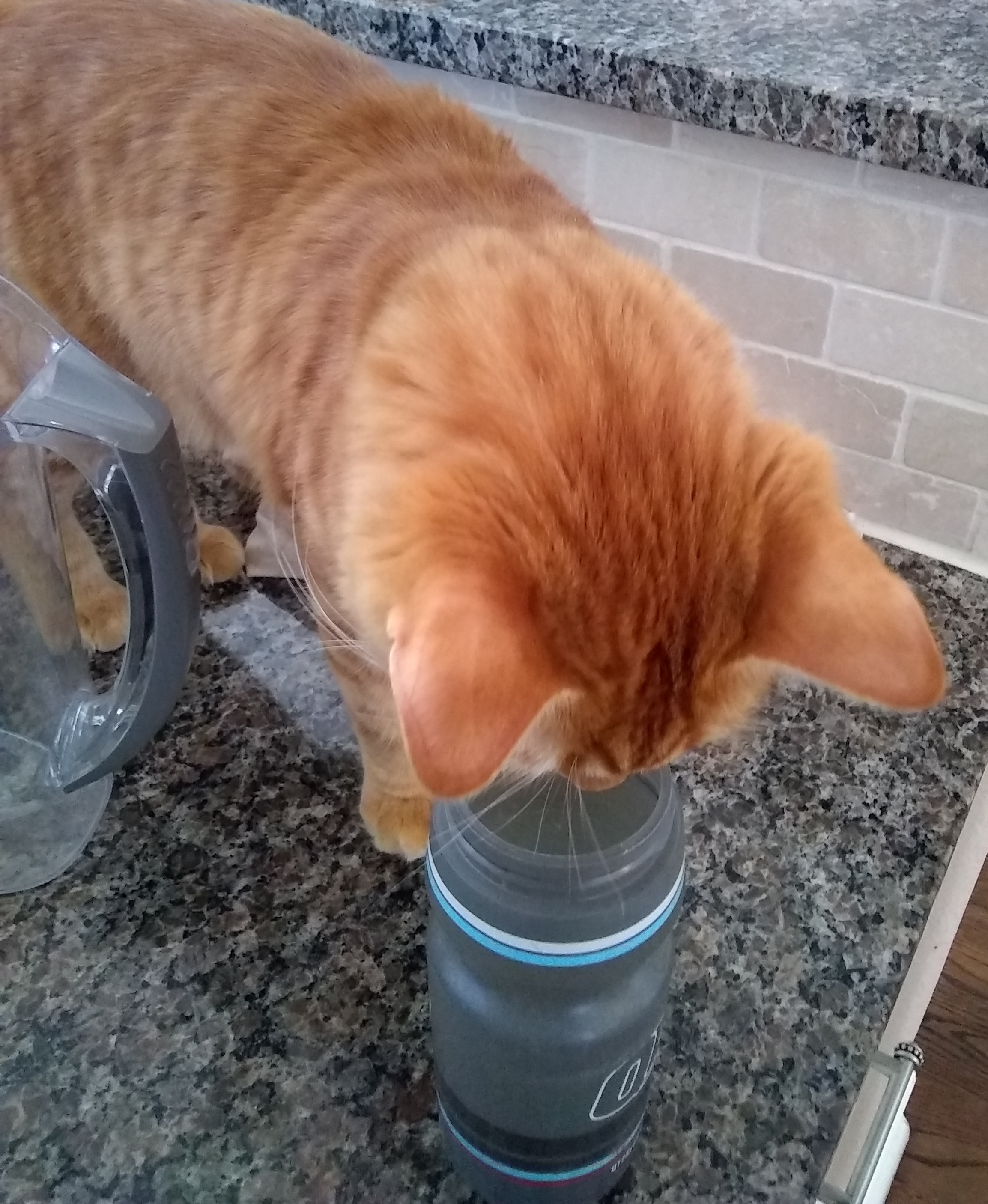Ironman Texas gave me a lot to look forward to. I was excited to be out there fighting the good fight with people like my new coach, a handful of QT2 teammates (including last year’s defending champion, Jodie Robertson), some of my heroes from Boulder, and one of my athletes from Madison.
IMTX has a reputation for being a fast course (AKA “short” course), it takes place early in the season when training feels fresh, and it’s located in The Woodlands, an aptly named, beautiful suburb of Houston.
It is also designated as the North American Championships, meaning some of the top dogs would be out there, but my goals had more to do with personal execution than competition, so I was undeterred by the presence of greatness. In fact, it was unsettling how extraordinarily calm I was on race morning. There is an appropriate level of pre-race anxiety that underscores how deeply invested you are in the challenge. It should fall somewhere between “I hope to do alright today,” and “I’m on my way to the Hunger Games.” I had a nagging feeling that maybe my arrows should’ve been a bit sharper.

We swam in that. Yum.
The race day water temperature was 74 degrees, which is much too warm for flopping around in a neoprene cocoon, in my opinion. On one hand, I was relieved that this made it a non-wetsuit swim for the pros (the cutoff is 71.6). However, since the age group cut-off is 76 degrees, this meant that the age groupers would be posting faster swim splits with their wetsuit advantage. Pro women had a ten minute head start, but by the end of the swim, age group men were coming in hot (in more ways than one, I’m sure). The swim exit was nearly in view when we were overcome by a tsunami of men, mercilessly barreling right over the handful of us who weren’t fortunate enough to make it out of the water in sixty minutes or less.
The bike course wasn’t as quiet as I’m used to, with such a large participant field (more than 2,500) and so many fast age group men already out ahead. My first discovery on the bike was that my power meter wasn’t reading. Since power is my preferred metric for controlling my effort over a very long day, and also what I had planned to use as my measure of the day’s success, this was more than a minor disappointment. But the number one rule of Ironman is: Things will go wrong.
So after wallowing in despair for a mile or so, I allowed myself to indulge in forty more seconds of pouting, then it was time to suck it up and move on. Once I got out to the main section of the course on the Hardy Tollway, I found I was keeping an even pace with two of the other pro women. Ironman abides by USAT regulations which prohibit drafting, defined as riding less than twelve meters behind a given athlete. Keeping the other two in view helped me set a good pace, and the focus on staying exactly twelve meters back gave me something positive and productive to think about. (You can measure using the lane markings in the road – the space of two painted lines is approximately how far away you need to be from the bike in front). We rode 30 or 40 miles this way, occasionally trading positions, but always staying just far enough – but not too far – from each other. By the second lap, though, I had to laugh at how deeply concerned I had been about adhering to non-drafting protocol. Around mile 60, we were swarmed by a pod of several dozen age group men shamelessly riding wheel to wheel. So much for rules.

This is what 12 meters apart looks like. (2017 photo from Slowtwitch.com, photosbyaaron.com)

All kinds of illegal. (2018 photo from one of the Mach5 coaches who was spectating.)
I tried to normalize it. This is just Ironman. It’s a big, crowded event. Complaining about this congestion and the resulting interference by age group men – that would be like complaining that an Ironman is too many miles (I mean, it is). But that’s just the nature of the beast. After all, you have to know that this is what you signed up for.
But just then, a road cone got churned into the mix, causing a chaotic scattering of bikes. A rider was bucked over the top of his handlebars as his bike flipped skywards. Hanging back a bit, I had time to react and steer clear of the carnage.
Ok, this is not what I signed up for.
I know there are people out there who get a kick out of watching videos of catastrophic Tour crashes or extreme sports wipeouts… This is not my thing. I get no joy out of seeing broken bodies and broken bikes.
I took a few deep breaths to settle my nerves and spotted my two pro companions up ahead. Unable to stay in front of the huge pack, they had been forced out to the far right, where we weren’t technically supposed to be riding. I watched as one of them caught her wheel in a deep groove in the pavement and toppled over.
Oh no! One of my peeps! It felt weird to ride past without stopping to see if she was alright, and I worried about her as I pedaled on.
Not five minutes later I heard a bloodcurdling scream and the sickening sound of carbon sliding across pavement as the pack ahead spit out two more riders, who tumbled across the road.
Enough.
I sat up and let the gap widen between me and the group. I wanted nothing to do with that disaster, and if it meant riding slower to stay far away from them, so be it.
Social media is ablaze about “all the cheating,” and claims that the prohibition against drafting in triathlon is supposed to prevent an “unfair advantage.” But honestly, that misses the point. To be sure, there’s an intriguing (or exhausting) debate to be had about fair versus unfair advantage in the sport. Drafting during the swim is completely legal, and that definitely provides an advantage. And wouldn’t a $10,000 bike also provide an “unfair advantage” to those few with such access? But the real reason the rule exists isn’t to prevent people from strategically leveraging resources – if it were, drafting wouldn’t be an essential element of competition in professional cycling and ITU triathlon. The rule is there for safety. Because amped up amateur triathletes aren’t trained in proper drafting skills, and they cause a hazard to all the riders around them. I’m not pro cyclist material, but I know one bit of peloton common sense: You never ride down in the aerobars when you’re six inches behind someone else’s back wheel. That’s just begging for a bike wreck. (That’s also one reason aerobars aren’t even allowed in draft-legal races).
Unfortunately, that pack was just one of many out there, so I got swallowed up by a few more – and witnessed a few more crashes – before the race was done.
Arriving back at T2 unscathed has to count as one of the major accomplishments of the day, and I got there a bit early since the “112 miles” we rode was 110 miles in what one might call “actual miles.”
Despite diligent efforts to fuel and hydrate properly, I was feeling mildly queasy even before getting off the bike, and the midday heat and jostling run did not improve the situation. My pace wasn’t spectacular and I didn’t feel awesome, but I was remarkably steady for the first 18 miles. And then I smacked right into that proverbial wall. Or more precisely, the pavement.
I had just begun to notice some dizziness rolling in when a curb leapt up and tripped me. Now, I don’t mean to brag, but I’ve got mad agility skills when it comes to tripping hazards, because I do a lot of my training runs with an exuberant border collie. So I was more than a little surprised to suddenly find myself on the ground. I’ve always had a grudging relationship with gravity, and I think my reflexive, “Ouch!” was more meant as an angry, “Damn you, gravity!!” than any actual expression of pain. Pain recognition had already clocked out for the day, and ultimately, I’ve sustained worse scratches from my cat than the little raspberry I acquired on that cement tumble. But it shook my confidence in a big way. Gravity, pavement, my own feet… none of those could be trusted now. I only had eight miles to go, but that meant more than 10,000 footsteps had to be executed with perfect precision in my precariously light-headed state. I was like a drunk trying to fake my way through a field sobriety test…one thousand times in a row. This component was conspicuously absent from my training regimen, so it felt foreign and I wasn’t too sure of myself.

My agility trainer.
I didn’t feel overheated, but much of the course was unshaded, and I was aware that heat was probably a factor. So I maximized all options to cool off and drink lots of water at each aid station (roughly every mile). For the first two laps I had chuckled at the spectators’ silly signs, thanked volunteers, and high-fived small children and scantily clad dancing men, but now it was No Distractions Allowed. I committed 100% of my brainpower towards making my feet do that running thing.

Apparently you can find the Moxie Multisport crew in the same spot every year. This year’s feature was a guy wearing nothing but a banana hammock, a police hat and aviators, dancing to the tune of his own referee whistle. I looked forward to his enthusiasm each lap.

Photo from a previous year, but this was a favorite of mine.
Counting helps me focus, so I counted, out loud, as I plodded past many of the age groupers still working on lap #2. I guess maybe “counting,” is inaccurate. I basically recited all the numbers I knew over and over again. Because that’s not weird at all. I did this for at least the last forty minutes, and all the way up the red carpet, which despite its magnificence did not inspire any shift in speed or urgency that I recall. After shuffling through the finish arch, I was delighted (even if it was only on the inside) to find my coach and my teammate, Amanda, who had come in a bit ahead of me. And I was immediately greeted by an angel, otherwise known as a volunteer “Finish Line Catcher,” the wise and stable guardian whose job it was to make sure I didn’t fall over (where were you eight miles ago, sir?!) After an obligatory QT2 photo op, my angel delivered me to the medical tent, which seemed like a fun place to hang out until I was sure I could wander about unsupervised.
I made it back to the finish line in time to see Bennet come through – a remarkable performance for a dedicated athlete I’ve been working with for years! Both Bennet and I improved our personal bests by over half an hour, although his PR was more legit considering his previous record was on this exact course last year. I had the odds stacked in my favor since Boulder Ironman had padded my finish time with a little bonus mile.
Side note: maybe those bumper stickers should say “140ish” instead of “140.6”
Come to think of it, if I was going to invent my own long distance event (the IronKimberly, of course) it would be 121 miles: 3 mile swim / 100 mile bike / 18 mile run. That sounds like the perfect day.

Major thanks for the support of QT2 Systems coach Tim Snow, sponsors Normatec and Quintana Roo, Tribike Transport, and my awesome homestay family who generously shared their time and space with me!

Cheers and inspiration from the kids! Having a fun host family really makes for a great race experience.

Flash, the homestay cat, inspecting my beverage.

